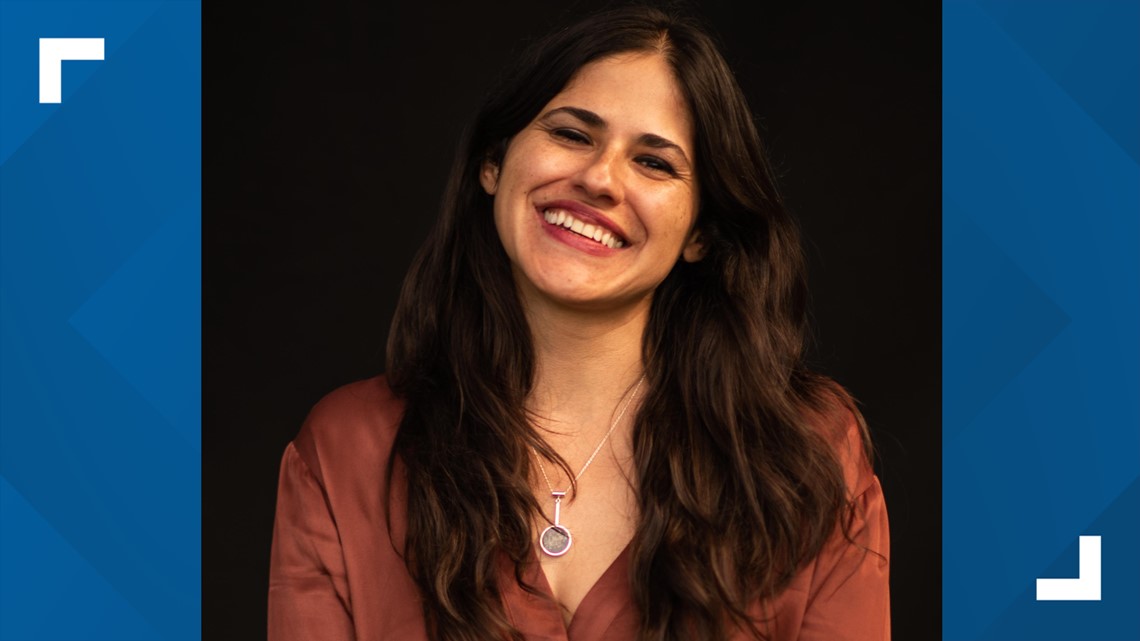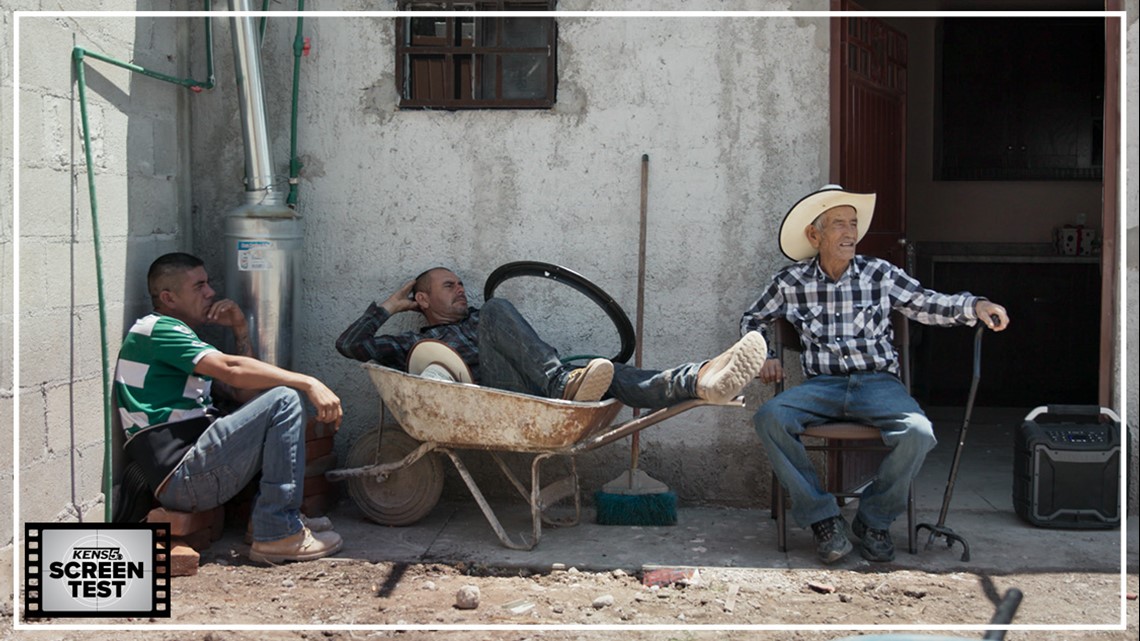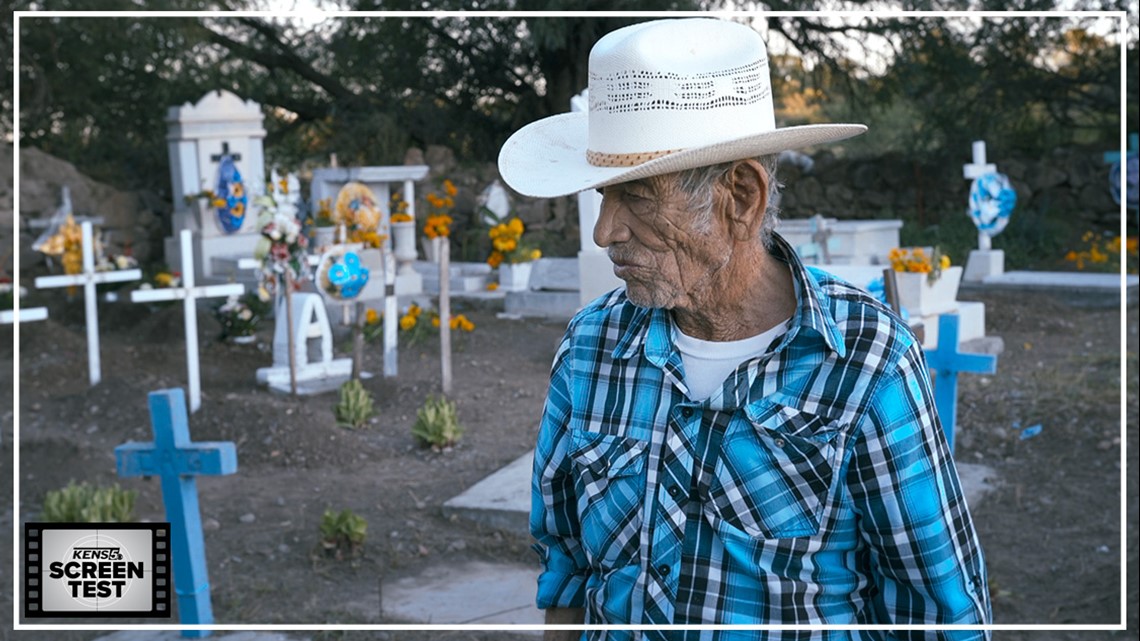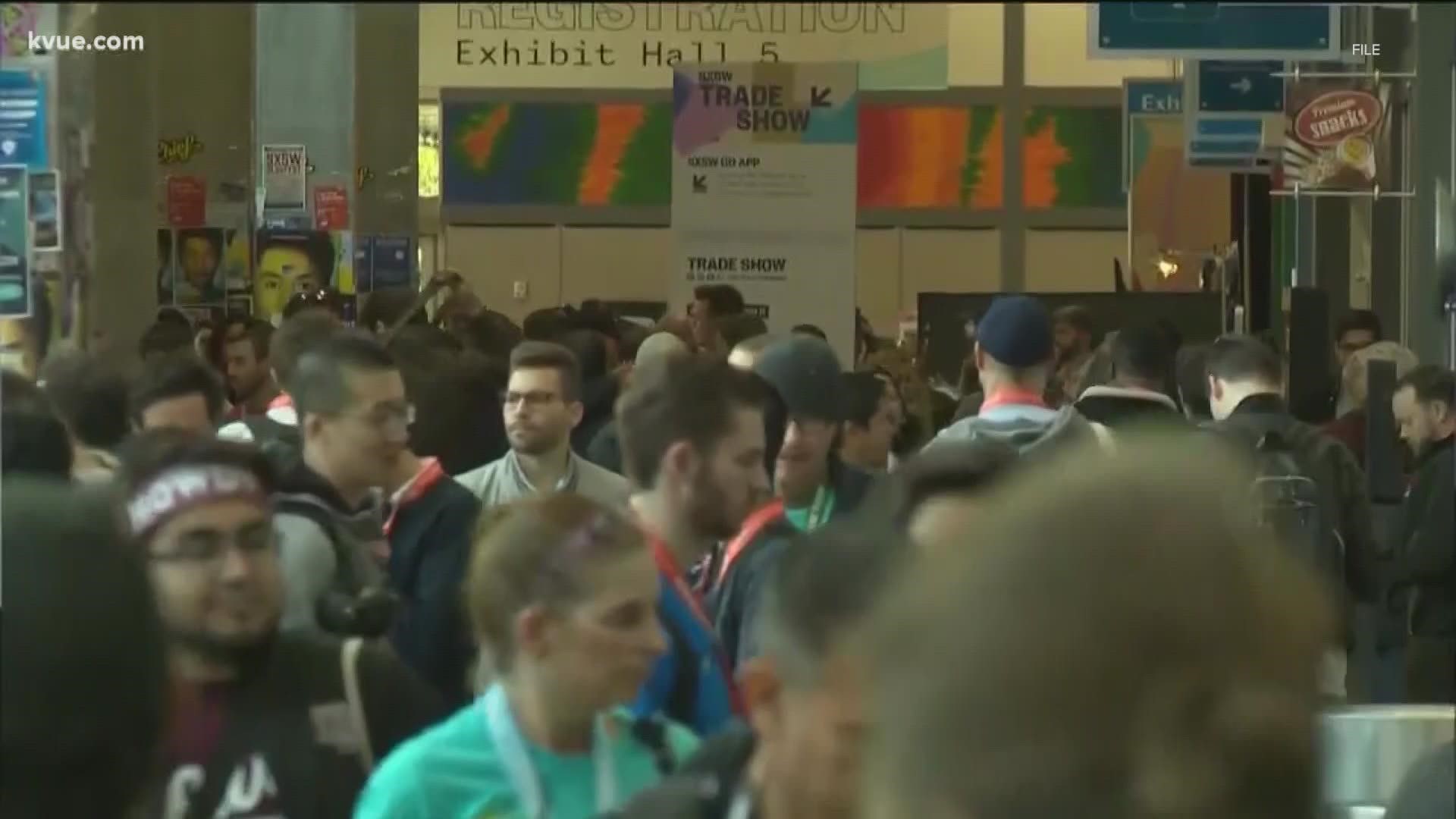SAN ANTONIO — While watching the sombrero-wearing señor at the center of “What We Leave Behind” deliberately scrambling an omelet, opening a can of beer and trying to remember the words to an old ballad he’s practically outlived, you can almost feel time slowing down around you. This is Julián, and in almost every respect his world is a contrast to the rush, rush, rush of Austin, where “What We Leave Behind” will premiere during the SXSW Film Festival.
There’s an irony in that, and also a bit of poetry. Texas’ capitol might as well exist in a different universe than Julián’s tiny north-Mexico hometown of Francisco Primo Verdad, but it’s through that lens that viewers can start to understand the curiosity Austin-based filmmaker Iliana Sosa brought to her project. In addition to being the director of “What We Leave Behind,” she’s Julián's granddaughter.
The result of that connection is a deeply melancholic feature-length documentary debut that locates its soul by not pressuring itself to look for it. It’s an ode to a way of living and a portrait of the latter days of a life fully lived, gracefully edited together with a patience mirroring the small rural community where it was shot. Observation and reflection are top of mind for Sosa as she captures her grandfather building a new house on an empty lot, providing the doc with a borderline spiritual visual metaphor as his health begins to decline.
Julián has been a widow for decades, and no longer makes bus trips every month to El Paso, where Sosa remembers seeing him fondly as a child. Those interactions have become deeply entrenched memories over the years, and Sosa gives voice to them, stretching her movie’s self-reflective nature to a cosmic scale.
I logged on for a Zoom chat with Sosa in early March to chat about “What We Leave Behind,” including how it grew more intimate over time, how she sought to capture her grandfather’s presence and what the finished film represents for her now.
This interview has been edited for clarity.
David Lynch: "What We Leave Behind” seems to be as much about what you remember about your grandfather as much as your grandfather himself. Could you tell me about the earliest memory you have about Julián?
Iliana Sosa: You know, the earliest memory that I have of him, he would always visit us every month. And he did this for many years, going back and forth between Durango and El Paso. He'd always come wearing his sombrero and his jeans and his plaid flannel shirts. He'd always smoke; he quit smoking a while ago, or, you know, when he was still alive, but he'd always have his cigarettes and he'd bring Mexican candy like Jamoncillo, his chile that he'd harvest in his fields. That's my memories of him. You know, smell of the earth. And he had a very particular, you know, way that he'd come home with this duffel bag with all the stuff that he'd then gift to us. And then he would take some stuff back with him.
Lynch: "What We Leave Behind" feels like a movie that you prepare your whole life to make, even if you don't realize it at the time. So when did you know it was time you wanted to capture Julián in this way? And was it always going to be a feature-length documentary?
Sosa: I started this project back in 2014. It was just an idea to document his work as a bracero, and the stories of him traveling back and forth between Durango and El Paso, and Albuquerque, that's where other extended family lives. So that was the intention. I never thought that it would become the feature that it is now and the story that it is now; the details of this construction project and the last year of his life, I never imagined that it would encompass all of that. But ultimately, it did.


Lynch: As far as the actual shoot, was it done over a period of multiple visits to San Juan del Río or did you stay there for an extended period of time?
Sosa: Yes, so, the first trips I would do by myself and I would just bring a camera. My mother would come with me and shoot, she acted as my producer (laughs). Later, when funding started to come in, that's when I was able to bring cinematographers, a DP, Monica Wise and Judy Phu, and also my sound team, who was Glenda Charles.
So it was us three at the time between different trips, and we would stay for about a week in Primo Verdad; that's the little town that my grandfather is from that's near San Juan del Río.
Lynch: You mentioned a second ago that initially this was a film about your grandfather continuously crossing back and forth to see family. We see a little bit of that, and you mention in the beginning he was told they would no longer allow him to take those bus rides alone. So it became a lot more focused on him and where he lived in Mexico, about you recognizing the place that your grandfather grew up in as well as the person himself. So did that change your approach?
Sosa: Yes, ultimately, it did. We thought it was important to include the bus rides at the beginning. Then I did an editing retreat through True/False (and) Catapult, and I had mentioned to some of the mentors there that he had started building this house. This was more than halfway through the filming, he started building it. And we, the family, didn't quite know why.
So my mentors at the time encouraged me to go and they supported me with a small grant and said, 'You should go and actually shoot this construction.' That was never my intention to include that in the film, but ultimately I felt that was the strongest footage. And so it did sort of steer me in a different direction after that.
Lynch: "What We Leave Behind" captures all the specifics about your family and the place where grandfather lived and how he lived. But there's multiple casual conversations where he doesn't really provide a definitive answer about who he's building the house for. Was that something that you were increasingly curious about, as you were talking to him on-camera?
Sosa: Yes, definitely. I was always very curious about why he was building this. And I think you pointed out something that's very interesting about him and some of the answers that I was seeking from him or my Uncle Jorge, who's also in the film; I sometimes didn't get the answers that I wanted, you know, and I think that's part of what makes those conversations interesting. There's that generational gap, but also a very different way of being, and communicating. And so I learned in the process that sometimes the answers I was seeking, there were no answers.


Lynch: About how many hours of footage did you gather? For something like this is there such a thing as having enough footage?
Sosa: Yeah, that's a great question. I think we had, Isidore and I, I believe we had around 200 hours of footage. And I shot over many years, many different interviews with different family members. Ultimately, when his health started declining, I felt there was... I took a camera down there, but I didn't film as much. And we were very weary of what we wanted to show or not with his health. We were trying to be respectful as much as we could be. I think ultimately, then, that was when the filming stopped for me. Because there was nothing else to film, unfortunately.
Lynch: I'm curious about the evolution that "What We Leave Behind" takes on as you have all this footage, and as you continue to piece it together and sift through not just these shots, but these memories that you have with the grandfather, who, as you alluded to, is no longer with us. Does it take a different shape over time in that process, not just because of your vision for the movie, but your personal attachment to it?
Sosa: Yes, definitely. During the editing process, it was very difficult for me at times to look at footage. And that's why I'm so thankful to my editor, Isidore Bethel, who just did an amazing job of helping me, guiding me, and he's just an amazing, amazing editor and person. And even now, for me, it's difficult to watch the film. I didn't realize how much it hit me until after we were done with post and had a test screening in Mexico City where we finished post-production. That was such an emotional moment for me.
Lynch: I'm a Mexican-American who grew up making multiple trips a year to see my family in Chihuahua growing up. And it's been far too long at this point since I've been back, frankly, but the movie spoke to me on a fairly elemental level in that way since it's so focused on memories and simple but powerful images, and you have some narration as well. How did you approach those three or four sequences in the film where you explicitly share with voiceover your memories of him?
Sosa: We had a rough cut, and then we got a lot of feedback from people saying, 'Oh, I wish you were in the film. I wish you were part of it.' I mean, I am and you hear my voice, but I never film myself as some documentaries do.
And so I decided, well, let's explore voiceover. During an editing period with Isidore and I, we did a retreat at the Jacob Burns (Film) Center in Pleasantville. I did a residency there, and with the help of Isidore and my producer, Emma Miller, I would write and they would look at what I had, and then they would comment and give feedback. It was really a collaborative process, and that's how we developed those voiceover sections. And we felt that it worked.
Lynch: What was your mindset going in and during the filming of capturing the place your grandfather lived as much as your grandfather the person? Did you ever find that one informed the other?
Sosa: Definitely. I felt that, you know, that Durango and specifically the town of Primo Verdad moves at a different pace. Life there is unhurried and I wanted to capture that. And I felt my grandfather, too, had this tranquility about him, even though he was never one to sit down. But the way he looked at life was just very... I was talking to someone about him, and (he was) almost very Buddhist (laughs).
So I wanted to capture the environment in that way, and I think it's very much a reflection of him as well. That's our pace of life, and that's why there's quite a few long takes in the film. And I think the editing is also reflective of his character and the environment.


Lynch: As we sit and talk right now, we're about a week out from it premiering at South By. What is your mindset like as you prepare to share "What We Leave Behind" and share your grandfather and your memories of him with the world?
Sosa: I'm really excited to be able to finally share this film, it's been a long time. And I really wish he was here to see it. I know that he's here in spirit. But I'm really just proud and honored to be able to share this and for people to actually be able to see it, and share it with a live audience. I feel very privileged, because there's so many filmmakers that haven't had that opportunity in the past to be able to share their work. So I realize that that's a huge privilege right now. I couldn't be more elated.
Lynch: One of the last shots that stuck with me is after we see your grandfather for the last time in the film. You take the camera and you walk through a house; is that the house that he lived in or the house that was built?
Sosa: No, that was the house that was built. That was his last project, the house that he built for the family.
Lynch: So, going back to a question driving the film of who he built the house for: Do you know what's become of that house, and who's in it?
Sosa: Yeah, the house is there, and actually no one lives in the house right now. It's still there, and I'm not sure exactly what the family's going to do with it. But I think, for now, it's going to be there and there's a place there for anyone that wants to come back.
Lynch: Which kind of seemed to be the idea that Julián had for it, right?
Sosa: Yes, exactly.
"What We Leave Behind" premieres at the SXSW 2022 Film Festival at 6 p.m. on March 11 at Austin's Alamo Drafthouse South Lamar, with additional screenings on March 12 and March 16.

